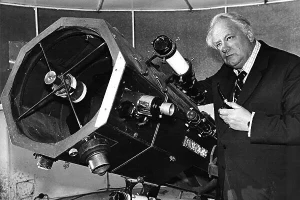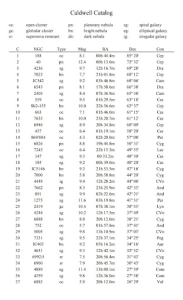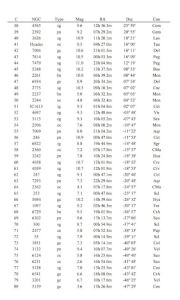“What is Patrick’s order from Caldwell Catalog?” By Pratham
The Caldwell catalog is a list of 109 galaxies, nebulae, and star clusters for amateur astronomers to see. Patrick Moore put up the list to supplement the Messier collection. Moore pointed out that while amateur astronomers use the Messier catalog as a list of deep-sky objects to observe, Messier’s list was not created for that purpose and omitted many of the sky’s brightest deep-sky objects, including the Hyades, the Double Cluster (NGC 869 and NGC 884), and the Sculptor Galaxy (NGC 253). In reality, the Messier catalog was established as a collection of recognized objects that may be mistaken for comets.
M12. M19. M31. Almost every amateur astronomer recognizes these designations. They are a few of the deep-sky objects present in the list of French astronomer Charles Messier.
But would you be able to recognize this trio if the letter C replaced the letter M?
The C stands for Caldwell as in Sir Patrick Caldwell-Moore, the well-known British astronomer. And in case you are wondering, the C12 is the Fireworks Galaxy( NGC 6946), C19 is the Cocoon Nebula(IC 5146) and C31 is the Flaming Star Nebula (IC 405).

These objects are a part of the Caldwell Catalog, a list of 109 bright deep-sky objects that can be observed in amateur telescopes, which are not included in Messier’s list. The Caldwell objects are designated with a C because Moore has the same initial as Messier. Some of these objects are visible to the unaided eye and some can be seen with the help of binoculars.
Whereas Messier as said limited his list only to the objects that can be seen from the mid-northern latitudes (Messier made his observations in Paris), Moore’s list has objects which are seen from the high northern latitudes to the low southern latitudes.
The flip side of this coin is, unlike the Messier objects, these cannot be seen on the same night from a single location. The Caldwell Catalog lists 45-star clusters, 35 galaxies, and 29 nebulae of various kinds. The objects in the Caldwell Catalog are numbered systematically, using the metric of decreasing declination. That is, they are numbered from the northernmost to the southernmost.
One exception to this order is the pair of C26 and C27. C26(the Silver Needle Galaxy in Canes Venatici) is marginally southward of C27(the Crescent Nebula in Cygnus), and on that basis, the order of the two objects should be reversed. Sir Caldwell-Moore first published his catalog in the Sky and Telescope journal in 1995.
Some important and familiar entries of the Catalog
-
C33/C34 (Veil Nebula)

The remnant of a supernova explosion is a wide ring-shaped structure in the constellation Cygnus. The two Caldwell Numbers refer to the eastern and western parts of the nebula.
-
C41 (Hyades)

This is the brightest object in either the Caldwell or Messier Catalogs. It is an open cluster that forms the head of Taurus the bull.
-
C80 (Omega Centauri)

Lying in the constellation Centaurus, this is the brightest globular cluster in the night sky.
-
C5 (Hidden Galaxy)

This is an intermediate spiral Galaxy in Camelopardalis. It was named such because it lies in a dusty region near the galactic equator and can be challenging to observe.
-
C6 (Cat’s Eye Nebula)

-
C23 (Silver Sliver Galaxy)

Silver Sliver Galaxy This is an unbarred spiral Galaxy appearing edge-on in the constellation Andromeda.
-
C27 (Crescent Nebula)

Crescent Nebula An emission nebula located 5000 light-years away in the constellation Cygnus. The nebula was formed by the collision of the stellar wind from its central star and the slower-moving material expelled from the star when it became a red giant hundreds of thousands of years ago.This is just a brief selection of some of the 109 Caldwell objects.
THE FULL CALDWELL LIST






